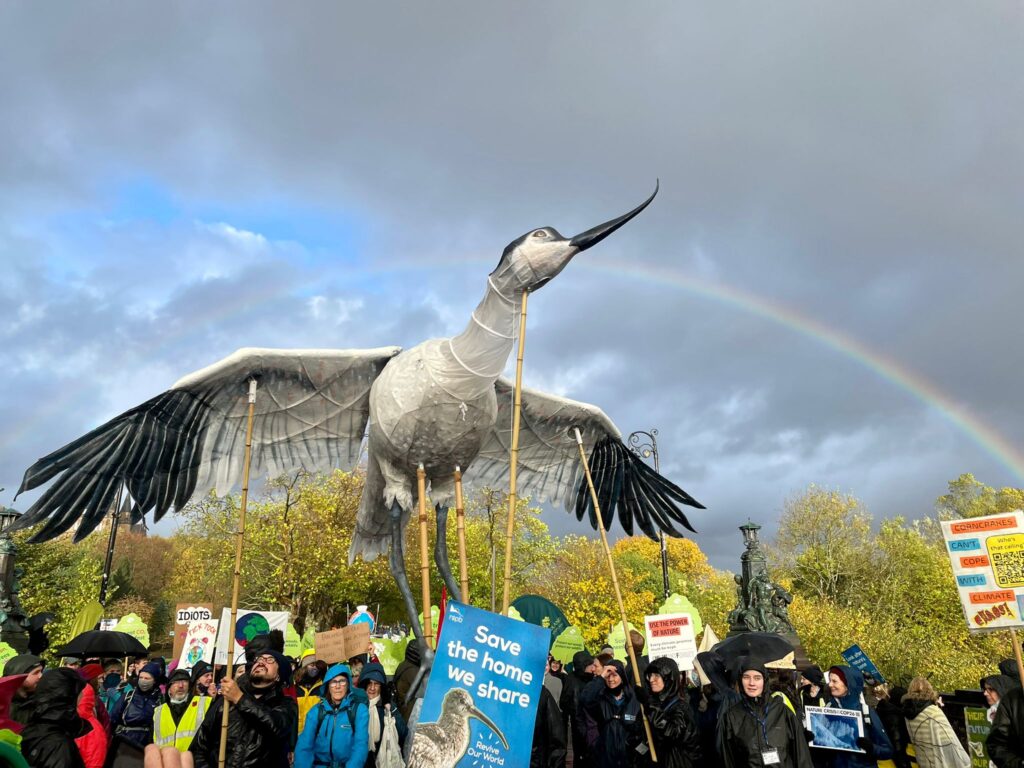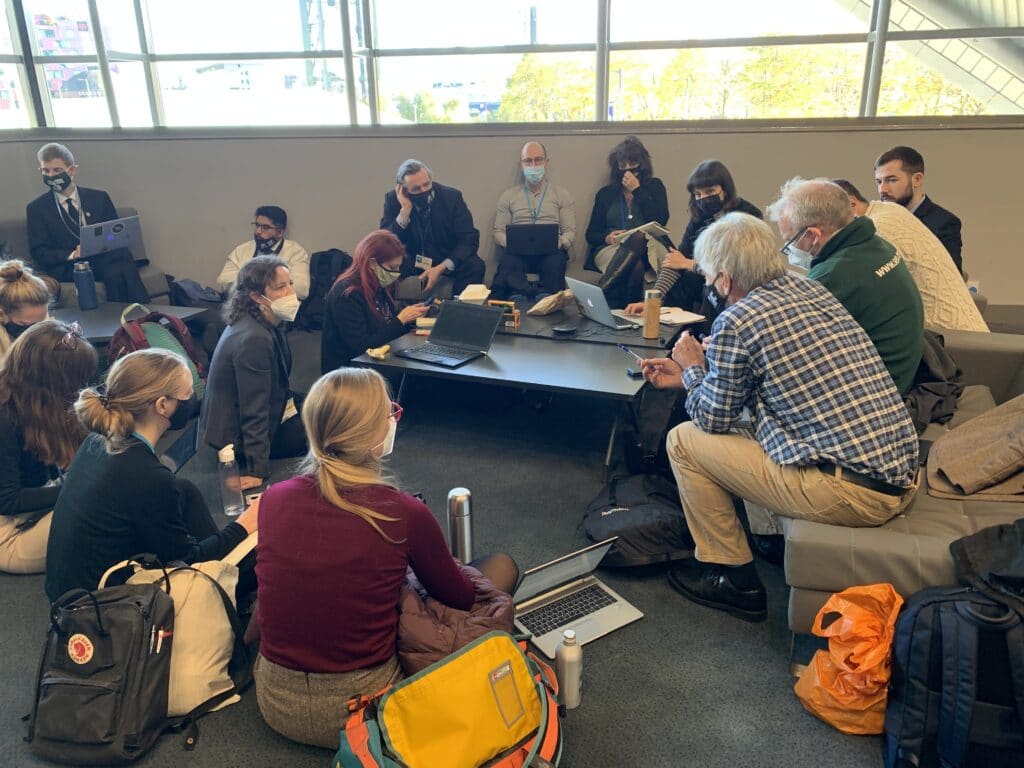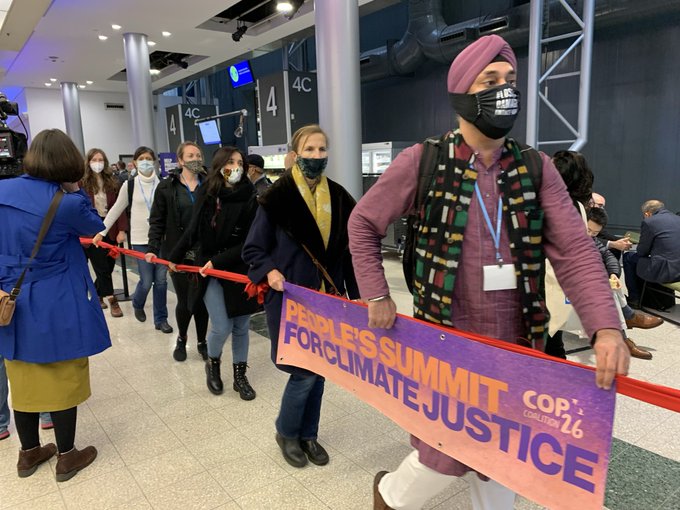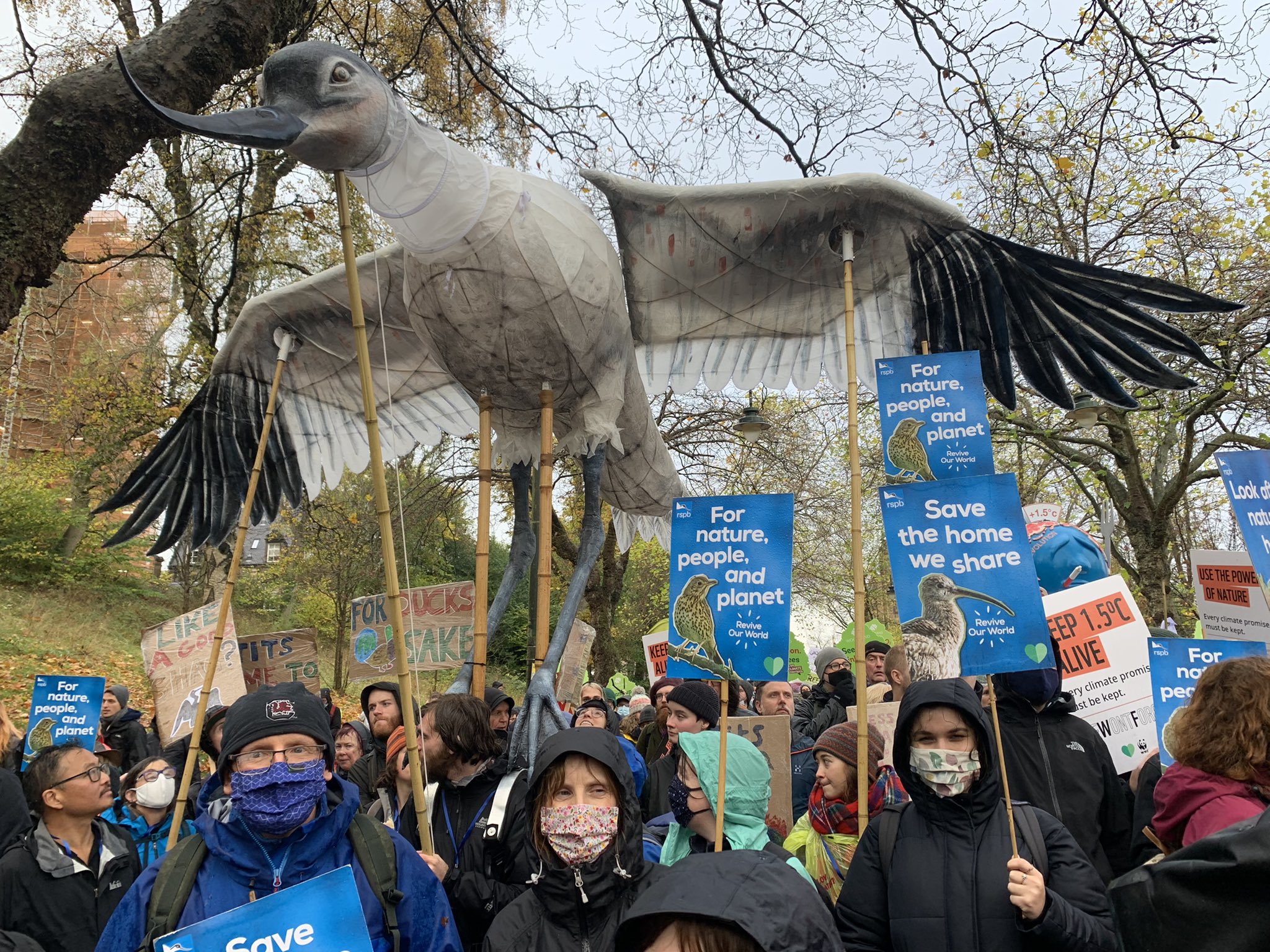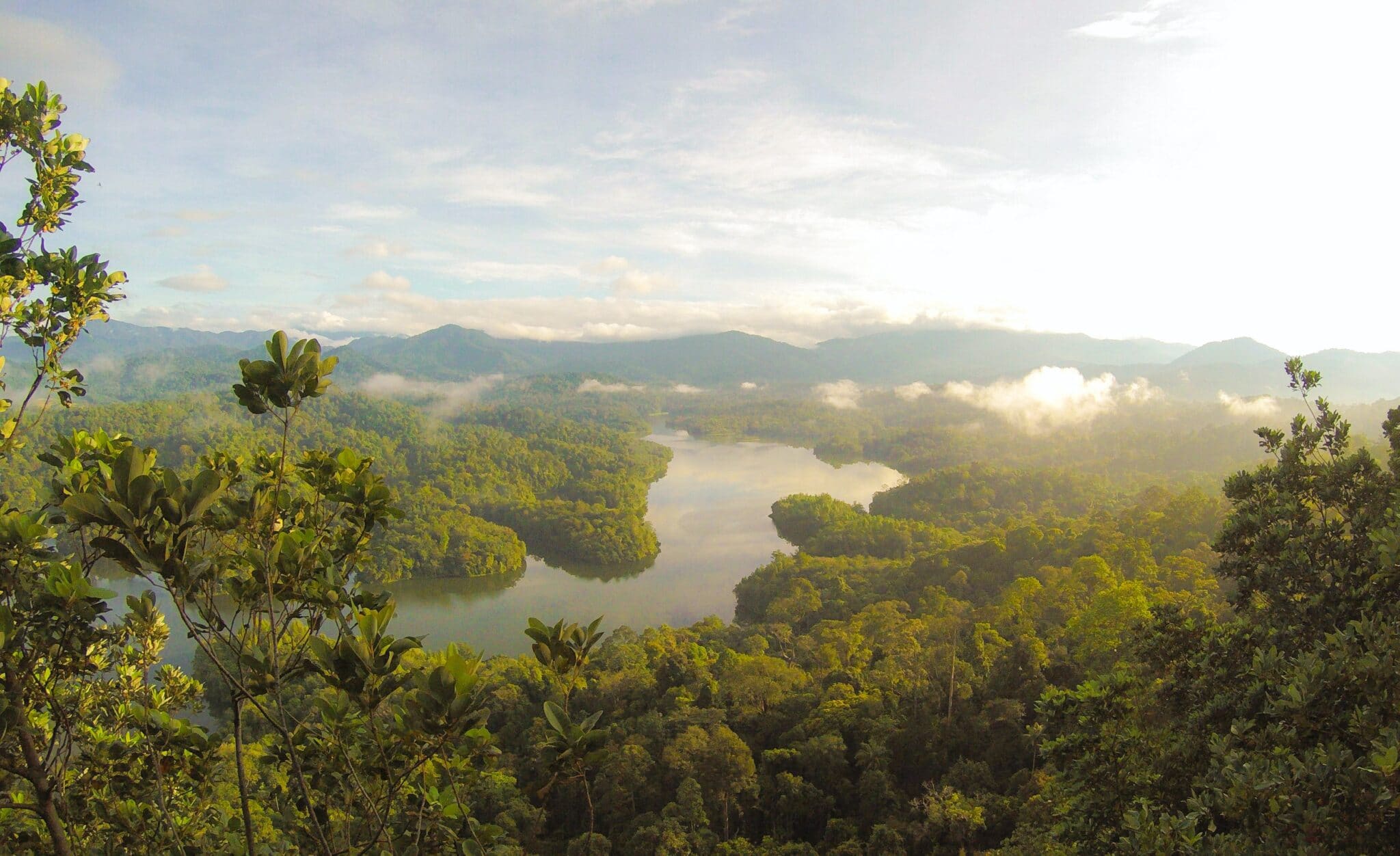Glasgow Climate Pact just about keeps 1.5 alive; Nature is finally recognised as key to fighting the climate crisis
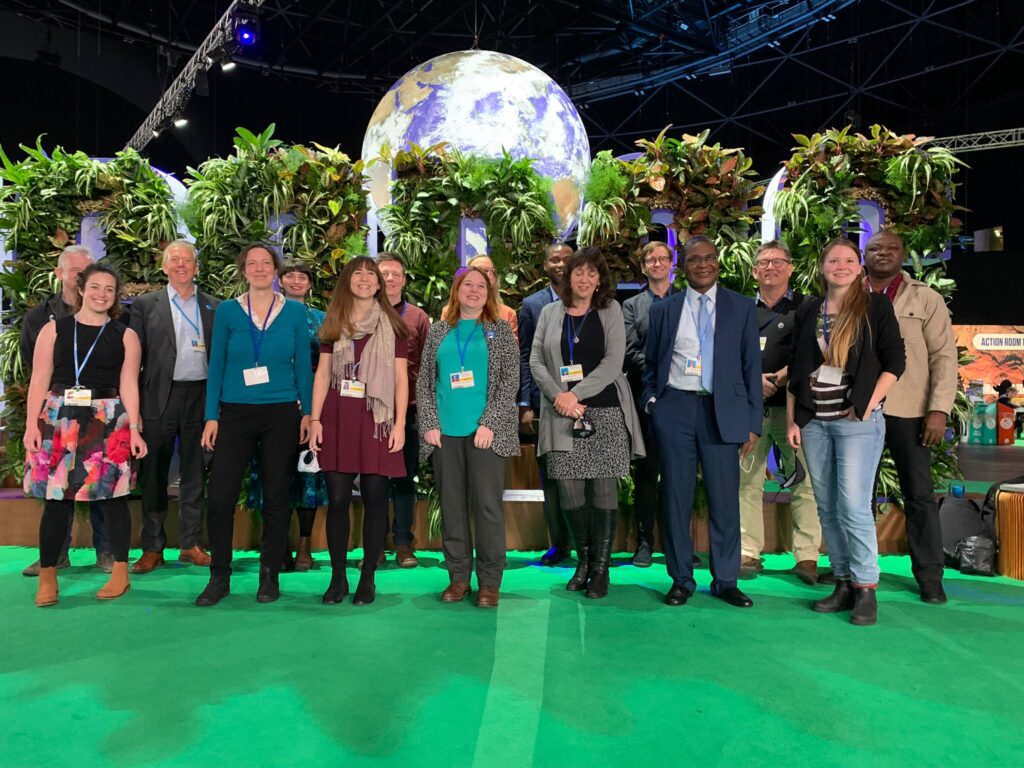
A day after the official end of the COP26 global climate negotiations and with an agreement hanging in the balance until the final minutes, the UK Presidency brought down the gavel to adopt the Glasgow Climate Pact, the most important new agreement on climate since the Paris Agreement of 2015.
By Melanie Heath, Global Director of Science, Policy and Information at BirdLife International
While finally recognising nature as critical to climate ambition and action, the deal falls short in other key areas, leaving developing and vulnerable countries – alongside climate activists and experts – bitterly disappointed.
After two weeks of intense negotiations under the UN climate change convention, the Glasgow Climate Pact has struggled to deliver a level of ambition and outcomes to keep 1.5°C alive (but only just) – the aspiration articulated by many at the start of the COP and based on what the science tells us we must achieve if we are to limit dangerous climate change and subsequent catastrophic widescale impacts for people and the planet.
The BirdLife Partnership, working closely with a broad coalition of allies, had been calling strongly in Glasgow for nature to play a central part in the final decisions on climate – we know that there is no viable route to limiting global temperature rise to 1.5°C without nature. On this front, we are indeed pleased nature’s critical role has been acclaimed and acknowledged.
Indeed, importantly, nature is well-recognised in the Pact – and we welcome the final text that cites its critical, complementary role in achieving 1.5, the need to integrate nature into national climate policy and planning, as well as the importance of ecosystem integrity and the need for environmental and social safeguards.
As someone who has spent decades fighting for nature, it has been refreshing at this COP to see more focus than ever before on the recognition of the role nature plays in climate change and the synergies across the nature and climate crises. I’ve participated in climate COPs for years and this has previously been far from the case. Nature and biodiversity have been very much resisted and in the margins, seen as elements that should be dealt with independent of the climate COP process.
But these two weeks have been a turning point. A groundswell of momentum from NGOs and a number of governments, including the UK Presidency that has run a nature campaign alongside the formal negotiating process, resulted in nature being a key pillar of the negotiations. This included a ‘Nature and Land Use Day’ with financial pledges and action announcements focussed on global action on forests and critical ecosystems, tackling deforestation via the Forest, Agriculture and Commodity Trade (FACT) Dialogue, a Glasgow Leaders’ Declaration on Forests and Land Use, and a joint nature statement by multilateral development banks committing to nature-positive investments.
Also, importantly, we joined Indigenous Peoples, NGOs, youth, and the public in demanding climate action and climate justice through huge marches here on the streets of Glasgow, and these ever louder and stronger voices are finally being heard. There have been many impassioned pleas for ambition, transparency, and action in the formal negotiations from governments, including from Tuvalu, which is literally disappearing due to sea level rise, asking “everyone to deliver and take action now – it is a matter of survival for us – we must not fail”.
“….it is a matter of survival for us – we must not fail”.
Simon Kofe, Tuvalu Minister of Foreign Affairs
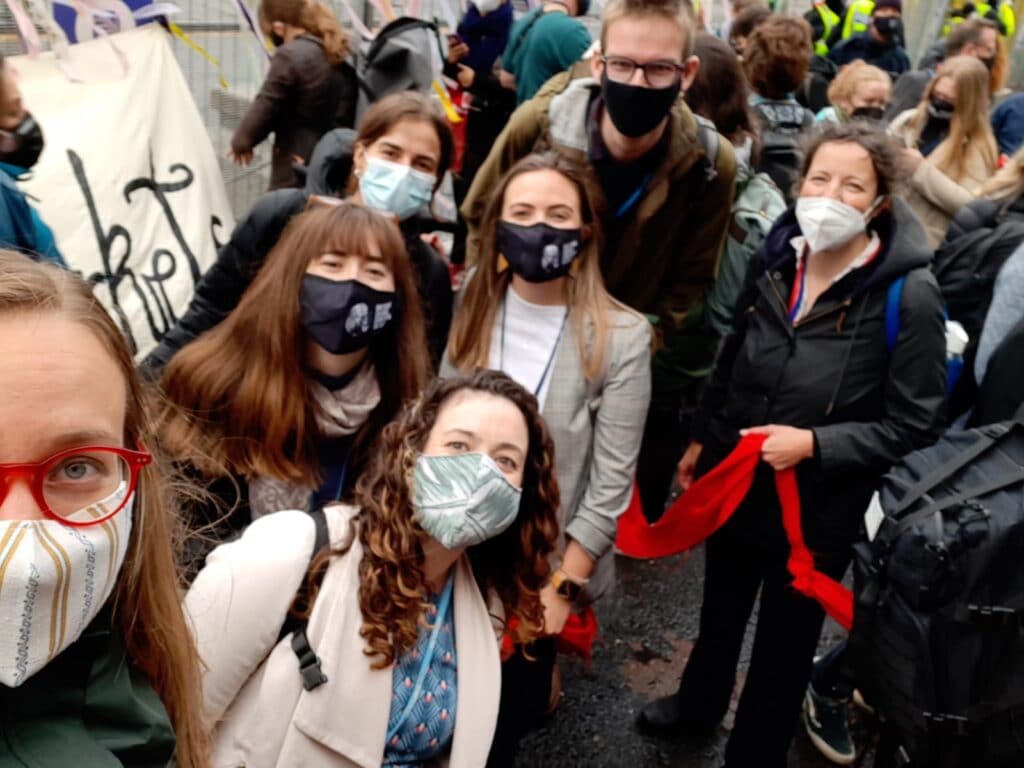
BirdLife delegates at the climate march 
RSPB’s magnificent papier mache avocet 
In collaborative debate
But despite these advances, conflicting agendas and powerful fossil fuel lobbies strained international diplomacy to its limits. There was, maddeningly, weakening of the commitments and extending of the timeframe to phase out fossil fuels, provide climate finance to developing countries and compensate climate-impacted nations for loss and damage incurred. The Pact has agreed more dialogue as a next step, rather than the formal facility proposed to enable the flow of funds that many developing countries so urgently need.
The last minute snag at the edge of the cliff was changing the language, at the insistence of a small minority of India and China and others, on the future of fossil fuels. I was moved by the tears of fatigue and frustration of the COP President Alok Sharma when he bluntly, just before gavelling the pact to a close, told delegates: “I apologise for the way this process has unfolded. I am deeply sorry.”
Acknowledging the Pact does not go far enough, UN Secretary-General António Guterres starkly urges that the world must now “go into emergency mode”, and we must now see these pledges and commitments from the past two weeks become a reality on the ground, and fast. We couldn’t agree more.
Critical to keeping 1.5°C in reach is the Pact’s requirement for countries to update their Nationally Determined Contributions (NDCs) to global emissions reductions by the end of next year. With NDC pledges currently adding up to 2.4°C, these desperately need to be further ratcheted up, and as the Pact notes, nature must be fully reflected in these NDCs, as well as National Adaptations Plans and Long-Term Low Emissions and Development Strategies.
Even though India led a small minority in forcing that 11th hour change to commit to phase down rather than phase out coal, which led to Sharma’s, and perhaps many others’ tears, it is clear that the era of coal is over. But there is much work to be done. We must see the rapid replacement of fossil fuel intensive energy systems with a transition to efficient, just, and nature-sensitive renewable energy, via effective policies, business change, investments, and innovation strategies, if we are to have any hope to meet 1.5°C.
COP26 has ended and we are already on the road to Egypt for COP27. There is still much to do to raise ambition and close the gap between 2.4°C and 1.5°C. As Kenya said in the closing plenary, “For us, 1.5°C is 3°C. This is the difference between life and death for our people.” Our BirdLife partners around the globe confirm these urgent stakes. With weaker ambition as one outcome at COP26, we will continue to intensively fight for immediate, ambitious action and transparency, and hold the UK Presidency to account as they hand-over the Presidency to Egypt.
And for nature the next stop is the biodiversity COP15 in Kunming in April 2022. We must continue to connect the two crises and action. They are inextricably linked. A global biodiversity framework is set to be adopted there which will set the path for nature to 2030, the same timeframe as the Paris Agreement.
We will continue to push to link the two processes internationally as countries implement their commitments domestically in agendas back home. Climate and biodiversity are two sides of the same coin – let’s build on Glasgow, retreat from the brink, strengthen the ”weak 1.5°C pulse” conceded by Sharma, and ensure we are truly living in an equitable, carbon-neutral, and nature-positive world. Decisions taken at the COPs tend to be incremental, but if the steps taken are not big enough, balanced enough, or fast enough, the 1.5°C target will slip out of reach with catastrophic consequences for all of us, and the other species with whom we share the planet.
“For us, 1.5°C is 3°C. This is the difference between life and death for our people.”
Representative of Kenya
“While rightly recognising nature as critical to climate ambition and action, the deal falls short in other key areas, leaving developing and vulnerable countries – alongside climate activists gathering in Glasgow and around the world – bitterly disappointed. The next twelve months will be critical. Countries must urgently increase ambitions in their emission reduction commitments, and importantly integrate nature into their updated national climate policies and plans. We must see urgent, joined-up, on-ground action to address the twin crises of climate change and biodiversity loss while taking a rights-based approach, to ensure an equitable carbon neutral, nature-positive future for all.“Melanie Heath, Global Director of Science, Policy and Information at BirdLife International
Related news
Stay up to date
Sign up to receive the latest bird conservation news. You’ll also receive updates about our projects, science and other ways to get involved including fundraising.
Thank you for your support, we are committed to protecting your personal information and privacy. For more information on how we use your data, please see our Privacy Policy. You can unsubscribe from emails at any time by using the link in the footer of any email from us.


